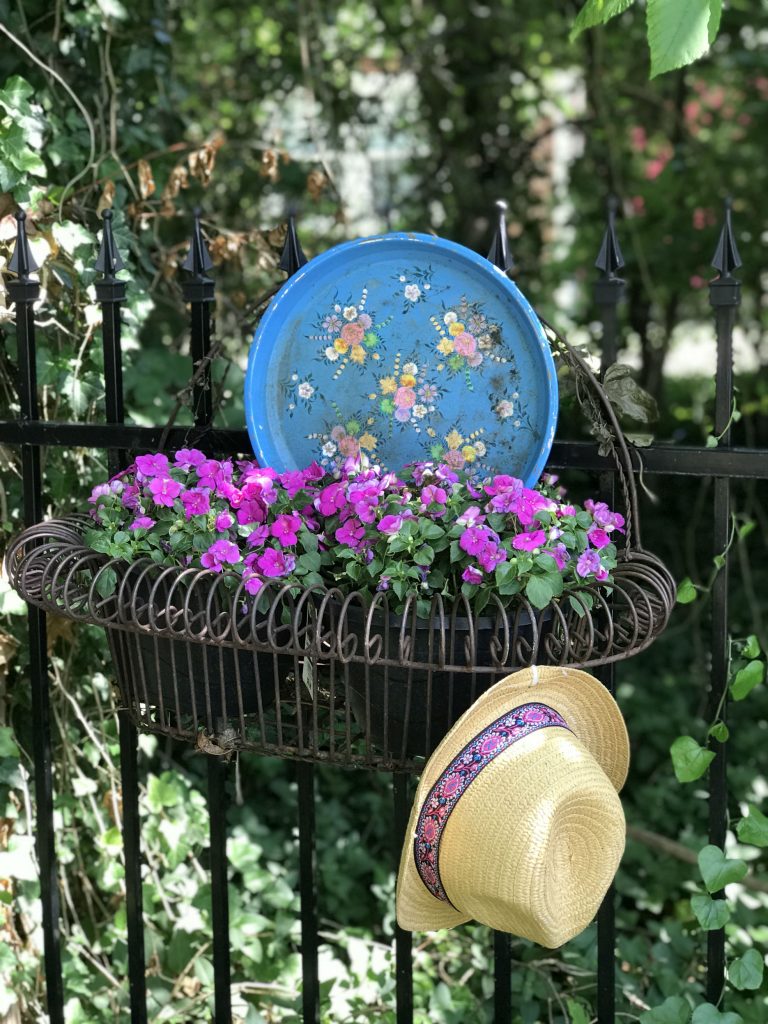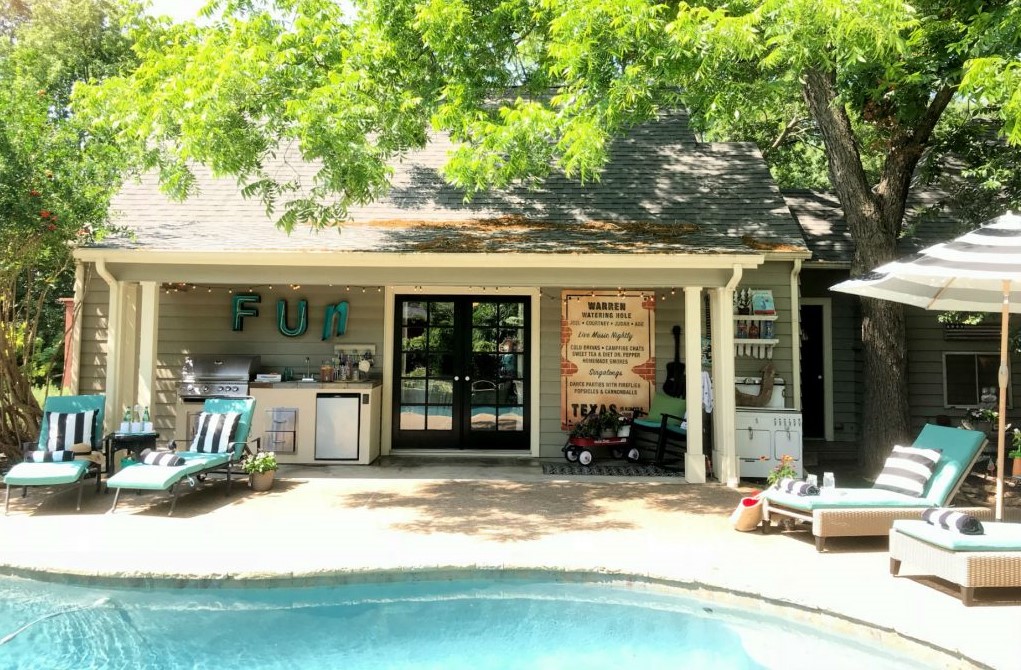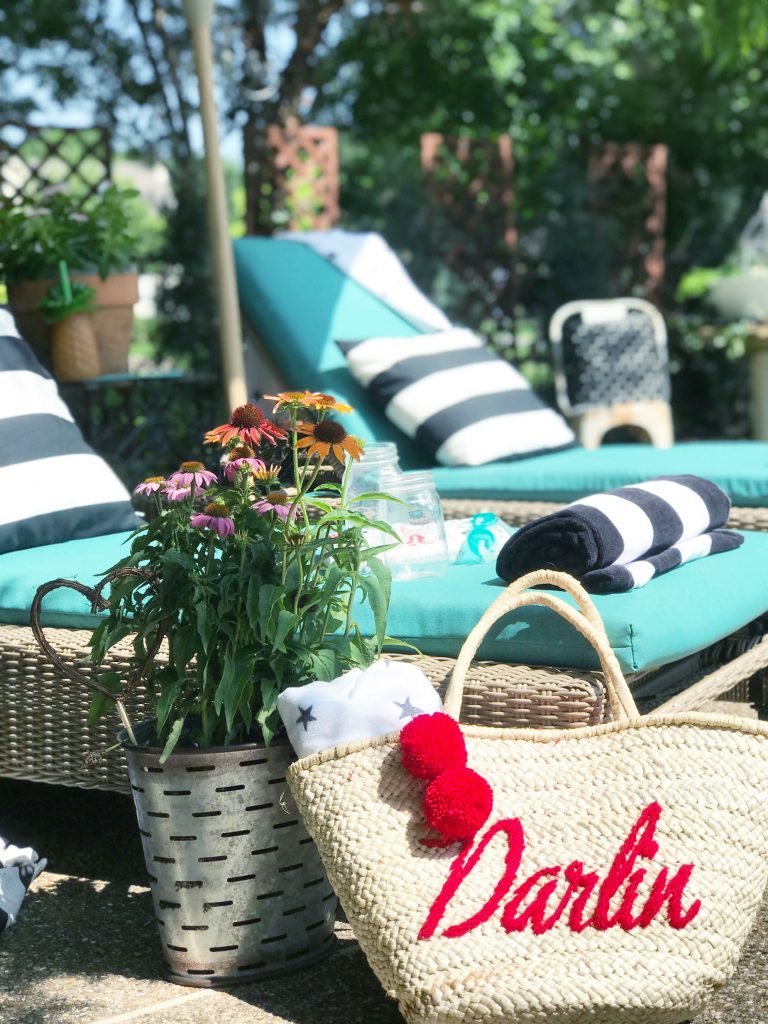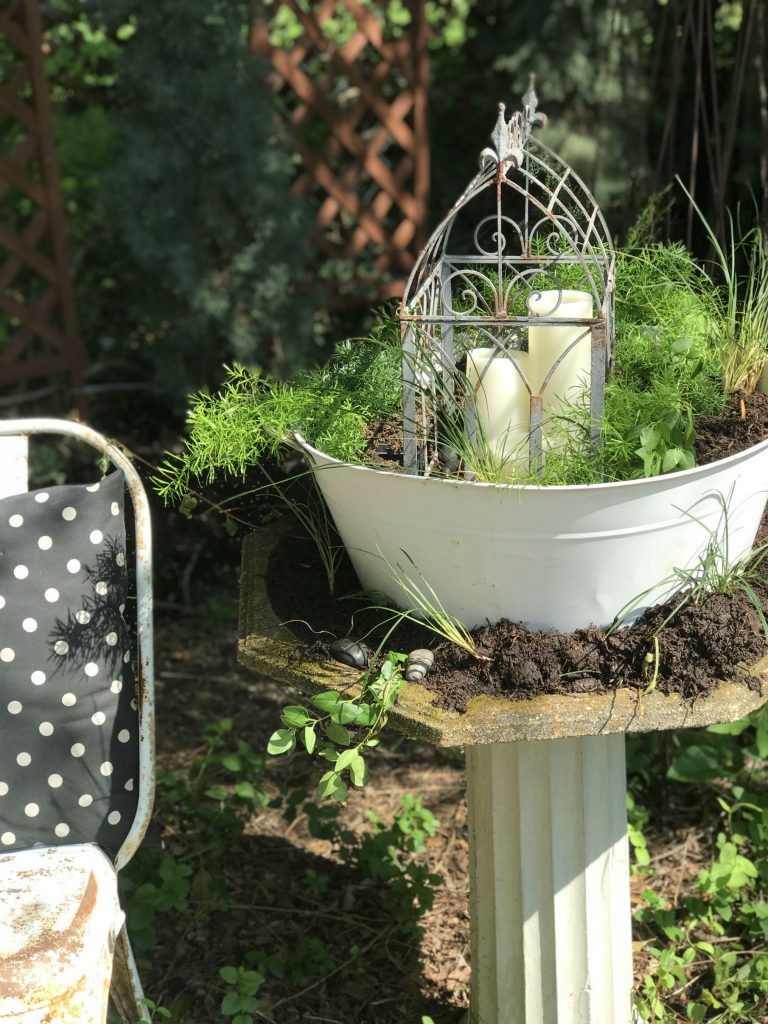Courtney Warren is a Texas-based interior designer whose work has been featured in Real Simple, Better Homes & Gardens, Good Housekeeping, Apartment Therapy, and Today.com. She is a frequent consultant on Fox 4 TV’s Good Day program in Dallas, was ranked in the top 3 percent of interior designers in the US by Houzz.com, and starred in the Dallas episode of TLC’sFour Houses. She delights in helping overwhelmed clients create beautiful spaces—and will never turn down a warm chocolate chip cookie or Diet Dr Pepper.
Shop the projects
My Go-To design accessories
How to Create a Garden Room in Your Home
If You Can’t Grow It, Don’t Show It
If you’re throwing down a few potted plants, blue striped wicker chairs, and calling it a garden room– we’re about to burst your bubble. That’s not a true “garden room.” Garden rooms are distinct rooms– spaces that have physical separation from the rest of your landscape or home. For plant lovers and nonfans alike, you’ll want to know how to create a garden room.
If you’re thinking, I’m not really a “friend of the earth” kind of person, that’s okay too. There are many garden room decor ideas (that don’t focus on plants), and we’re going to cover the basics here! If you’re looking for a GREAT place for you to relax after you’ve had a long day, this might be your answer.
So, how do you create a garden room? What are the essentials you need to know? Let’s dig in!

What’s a garden room?
What comes to your mind when you think “garden room”? Probably an orangery or conservatory. What’s the difference between the two? Well, they’re pretty much the same thing. Except, a conservatory has an all-glass roof, and an orangery has a solid roof with a glazed center and sides. The original purpose of these structures was to grow exotic plants and fruits. With plenty of natural light, it’s still a popular option for a private garden room.
But, we’re breaking tradition. There are now MANY variations of garden rooms. THINK outside of the box! Try an alfresco bar for warmer months. Offer a scenic spot for a makeshift home office. OR, build a gym in your garden room and attach a gable awning for a sheltered spot to house your hot tub! Not your typical garden room, right?

How do you build one?
These structures use glass, brickwork, stone, or lantern roofs. There are garden rooms with solid roofs too.
If you take the traditional route and build an orangery– you don’t need to construct the whole thing from glass. Not using all glass will work in your favor because this space will be less subject to weather extremes. Orangeries also allow you to extend your living space. You’ll have a light-filled room that’s open and airy. It’s a nice way to feel like you’re “one with nature” without worrying about pesky crawlers plodding up your mouth when you’re power napping. Yes, science shows you eat a few spiders every year in your sleep. We know, it’s horrible.
After you decide which garden room you want, pick finishes that align with your garden room’s purpose AND the style of the rest of your home. For example, if you’re building a home office with a contemporary finish– opt-in for a stainless steel frame. This space will be stable and weather tight.
If you’re designing a guest room, a modular outdoor annex is ideal. These units come pre-made and slot into place. Some modern designs come equipped with a kitchen, bathroom, living space, and bedroom. There are also assisted-living annexes. These are wheelchair accessible and include voice activation. What a perfect solution for families caring for elderly loved ones!
Steps on how to create a garden room:
Step 1: What will your room’s purpose be? Brainstorm.
Step 2: Finalize if it’s going to be indoors or outdoors or both (partial interior structure with a sliding door that opens up to your exterior lawn).
Step 3: Focus on a location and create separation.
Examples:
A. Outdoor separation (tall grasses or shrub topiary)
B. Indoor separation (types of building materials you’ll need).
Step 4: Take into consideration your landscaping AND the path to your garden room. There should be a clear, accessible entrance to it.
Step 5: Brainstorm a list of any structures you’ll include in the room. Seating area? Firepit? Water fountains?
Step 6: Think about any electrical access you’ll need– lighting, pumps, entertainment, etc.
Step 7: Use plants that fit your aesthetic, including color and height. Don’t forget about SMELLS! And feels. And allergies. If you’ve got kids, for example, maybe rough, spikey feely plants aren’t the best. OR, if you’re sensitive to smells, don’t plant lavender everywhere.
Step 8: Sketch out an initial plan and go from there! Contact the right professionals you need or go with a DIY route.

Whatever you pick– create a space you’d WANT to visit and spend time in. Also, consider whoever else will be sharing this space with you — kiddos, grandparents, or pets!
It should be a space that is safe and welcoming for everyone.
Pro Tips:
(1) Want to shade your conservatory? Use a solid roof and window blinds OR solar-controlled windows to reduce glare and temperature. Low-emissivity glass is an option too. You’ll avoid heat loss in a north-facing room.
(2) Installing underfloor heating or a stove will allow you to access your garden room all year round, even during winter months.
(3) Paint choices are essential too. If you’re going for a gothic design, dark green paintwork works well. If you want a coastal, Hamptons vibe, white hues do best. Traditional concepts work best with lighter, softer pastels. Think wooden cladding with a light bluish-grey exterior.

Can these spaces be attached to your house?
YES! The options are endless. You can use a glazed extension to expand your living room or make it a space purely for plants.
If you’re not short on space, your garden room can be a convivial space to entertain. It’s like having a “back up living room” WITH an awesome view. Can’t say no to that. Mix pieces of furniture that work well for interior and exterior settings to get a stylish look that makes sense for a garden room. Go for easy to clean fabrics too. Performance fabric linen sofas or comfy rattan swinging chairs.
Can you sleep in a garden room?
Depending on your design decision, some garden rooms create a perfect slumber. Simple furniture and cozy matting will build an excellent spare/extra bedroom. For example, if you choose a traditional wooden cladding for a beautiful garden studio, you’ll have a super welcoming guest room.
Which plants should you include?
Based on your style and climate, many plant choices can work for your lifestyle. Also, the plants you chose will depend on if you want an outdoor or indoor garden room. Some options we love:
- Springers asparagus
- Swiss cheese plant
- Devils ivy
- Succulent plant
- Vipers bowstring hemp
- Maidenhair or rabbit fern

Not sure where to shop for house plants? Sign up for the house plant box subscription and get a dose of plant-happiness delivered to you every month! They have subscriptions starting at $12 AND premium pet-friendly boxes too.
Yes, some plants are SEVERELY toxic to your pets, so please do your research.
Pollinators are essential too. Birds, beetles, butterflies, and bees are examples of pollinators. They are crucial to the reproduction of healthy crops and ecosystems! By adding plants pollinators love, you’ll conquer wildlife-friendly landscaping. It’s a win-win!
Some plants that attract pollinators to a garden:
- Daisies
- Dandelions
- Cow parsnip
- Starflowers
- Marigold
- Lavender
- Sunflowers
We hope you enjoyed learning about how to create a garden room in your home! If there’s still another design conundrum on your mind, we can’t wait to hear from you! Let’s chat!
→ I offer a complimentary, no-strings-attached phone call consultation. We can also consult by video conference. If you’d like to meet in your home, please know we will use all current safety protocols.
EMAIL ME TO BOOK A CALL TIME–and let’s start making design fun!
In the meantime, catch other great design tips on my YouTube channel, Real Life Design with Courtney Warren!